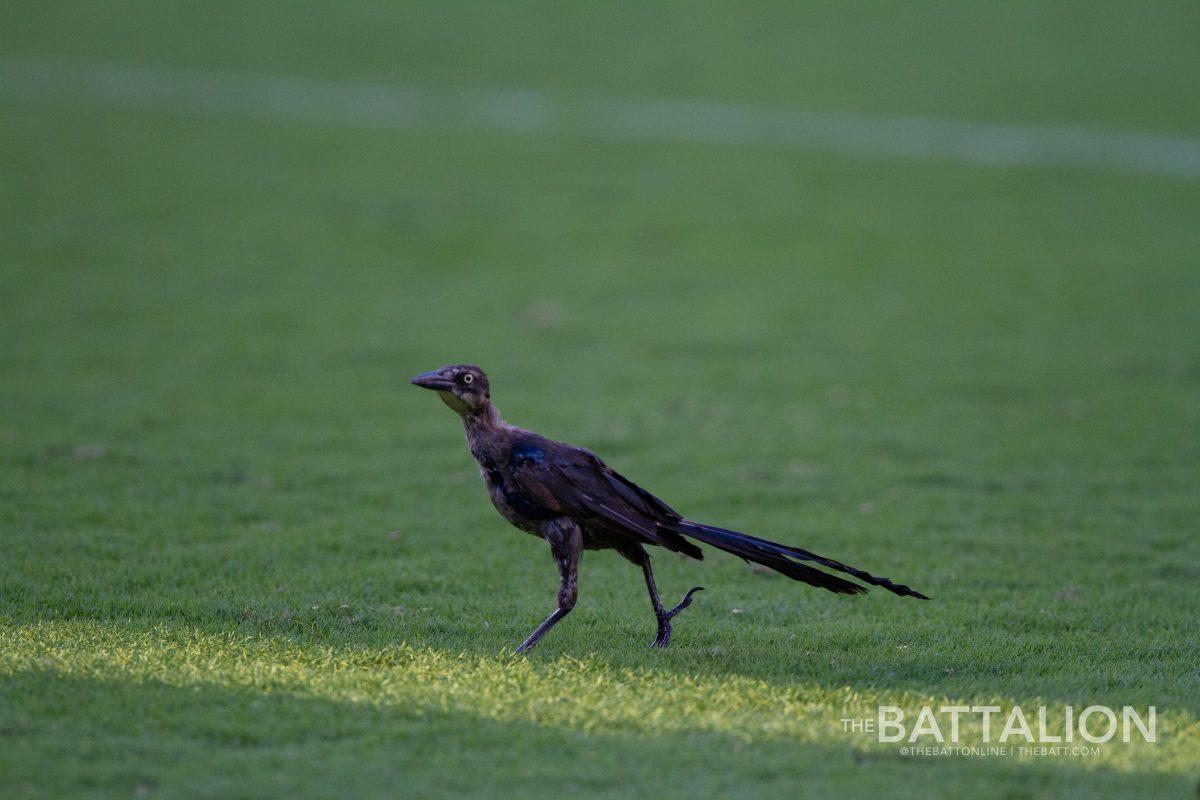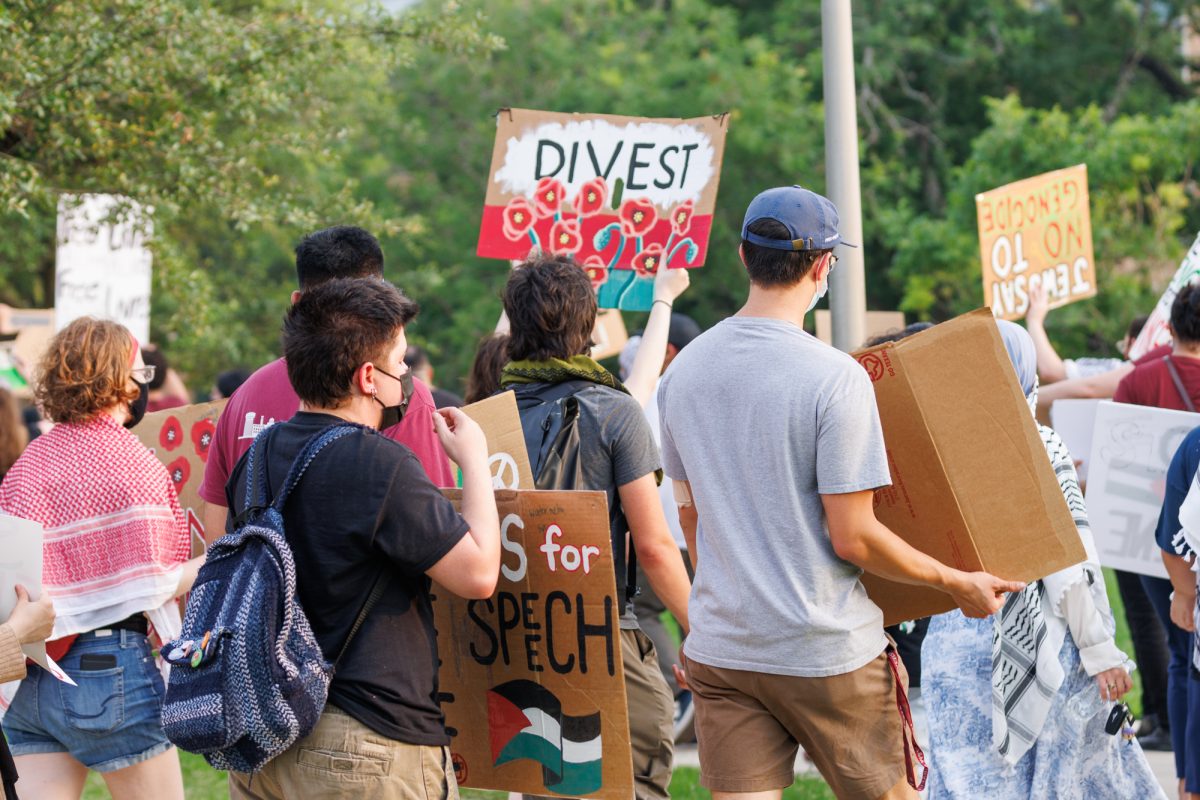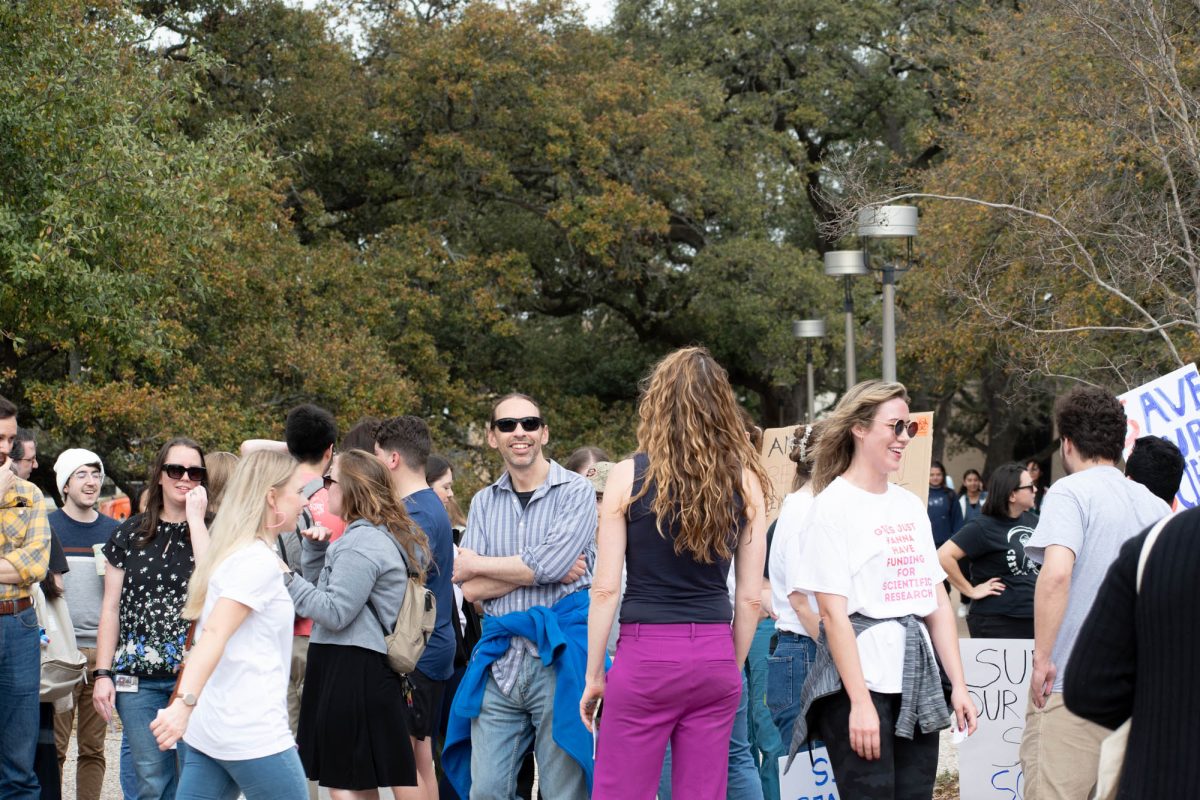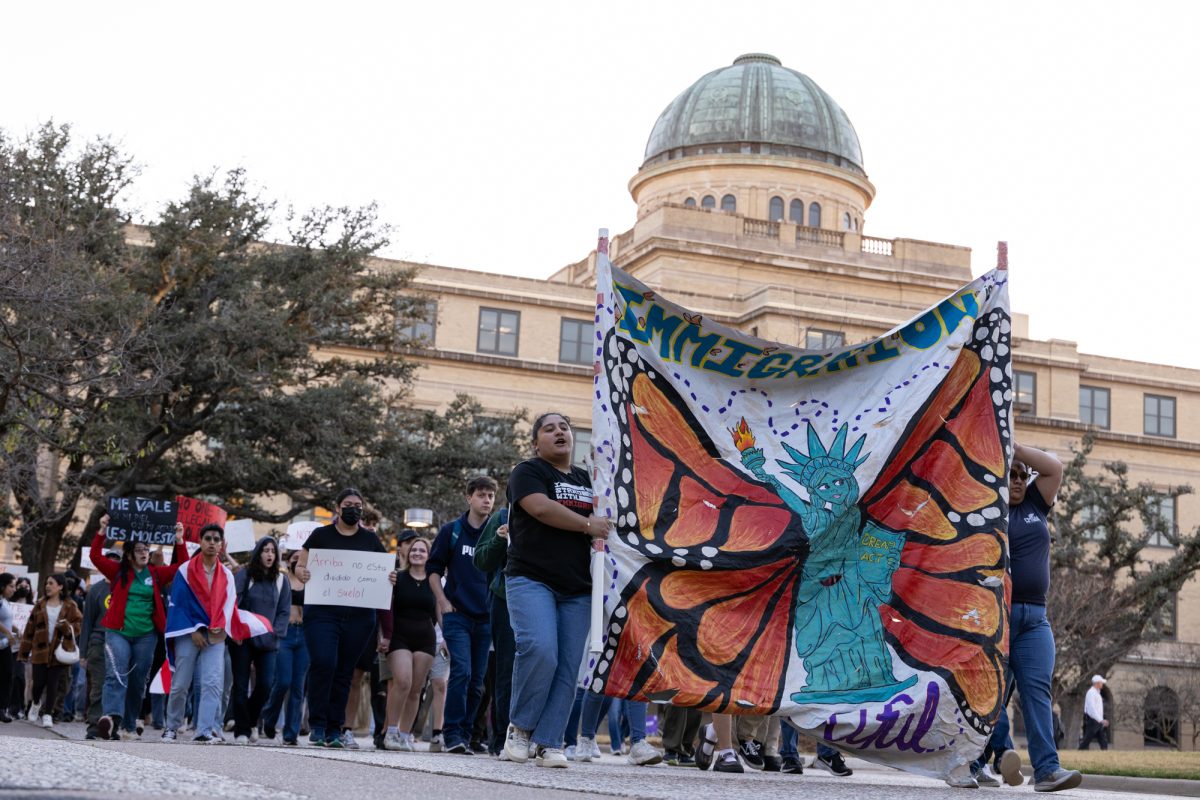After weeks of training and preparation, followed by days of driving, there it was: Citlaltépetl. The summit is covered by its own glacier rising above us in the distance. My mind drifted back to the hours spent climbing the emergency stairwells of Rudder Tower. It’s hard to train for climbing a mountain in College Station, Texas.
The group is made up of three Aggies: Ricardo Villaseñor, a senior petroleum engineering major, Alejandro Sors, a junior political science major and me, Patrick Clayton. I’m a senior engineering technology major.
5:30 a.m. March 14
I hear the Jeep outside. The doors open and close, recognizable voices drift softly in the thick humid air. “Good morning,” Ricardo greets me as I set my bags and gear among the jumbled pile of backpacks, hiking boots and climbing gear. Despite the early hour, we’re excited to be getting on the road. Leaving College Station, talk shifts to the topic at hand. El Pico de Orizaba, Citlaltépetl, 18,855 feet of strato-volcanic rock. The third highest peak in North America, seventh most prominent in the world. This is our first high altitude summit attempt, and it will be a true challenge of our skills and endurance.
As we drive south toward the U.S.-Mexico border, I continue thinking about the recent increase in violence. Was this a good idea after all? There was no turning back. Piled high with mountaineering gear and clothing, we drove on Highway 77 south toward Corpus Christi. The small rural towns begin to change as grain silos give way to palm trees. We drive through the Rio Grande Valley, with its fruit stands, Mexican restaurants and pickups loaded with farm equipment, drivers tanned by the Texas sun. We are out of place with our bags of coats, gloves and hats.
“We’ll make it to Tampico by 7,” Alejandro says from the drivers seat. We will stay with his family there for the night, and continue on south toward Tlachichuca, Mexico, the next day.
4 p.m. March 15
We arrive in Tlachichuca, a small rural community within the state of Puebla. It’s the type of Mexican town I had imagined: a dusty plaza, shadowed by the most prominent fixture in town, the Catholic church. People milled around. Young and old looked for acquaintances, enjoying the warm afternoon. Above the town, the summit of Citlaltépetl hides behind the clouds that had blown in that afternoon. Still unable to see its peak, we shade our eyes and look up, hoping to catch a glimpse at the adventure that lay ahead.
We meet our guides, Salvador and Gustavo. Both members of the Mexican Alpine Club. The two combined had climbed Citlaltépetl more than 25 times. After discussing the following day’s itinerary, we parted ways for one last evening of rest before the ascent.
We spend the evening with Señor Reyes, a local climbing guide and outfitter. He operates a climbers’ hostel inside a century-old soap factory opened by his great-grandparents. No longer producing the soap the building was originally intended to make, Señor Reyes now provides a place for international climbers to both prepare for and unwind from days on the mountain. Complete with century-old vats and industrial mixing devices, mountaineers from all over the world share experiences around the wood stove within the ancient building.
As I lay in my bunk, the noises from the small, bustling city of nearly 28,000 rise up. My thoughts are interrupted by the distant echoes of cumbias and rancheros spilling from the local nightspots. Stray dogs, searching for the one good meal for the day, weave in and out of the shadows in the dirty cobblestone streets. I am safe inside Reyes’ compound under a heavy wool blanket.
Tomorrow will be a different story.
9 a.m. March 16
We meet the guides for a quick trip through the town’s small tiendas, filling bags with the needed food and other necessities for the mountain. Tea, meat, vegetables and crackers are on the list.
With needed supplies in hand, we head for transportation to base camp. Joaquin, a local outfitter, will take us on the two hours of four-wheel drive trails that precede Piedra Grande, a refuge situated at nearly 14,000 feet. With gear loaded on the roof rack of the 1966 Dodge Power Wagon, we pile inside. It’s the perfect mountain taxi, one that looks out of place on the city streets and more natural on a rugged trail. The mountain is real now. I feel its force as our party crawls up its elevation slowly, rocking back and forth along the narrow trail to Piedra Grande.
Because inclement weather moves in quickly, it is necessary to be off the summit by early afternoon. The refuge serves as a base camp for climbers attempting to acclimate themselves for the necessary nighttime accent on Citlaltépetl. It’s dirty, marked with the names of previous climbing parties, a transient space where climbers tell tales of summits past in as many languages as there are rocks on the mountain. Small gas burners work hard to keep their flames from being extinguished by the dry, thin mountain air.
We arrive at the refuge early afternoon. The sun is behind us, casting shadows on the ancient volcanic rock on which we stand. Tonight we plan to make our first attempt on the summit. My lungs work to make use of the scarce air as I unroll my sleeping bag and begin arranging my things. We sip tea made from Coca leaves to help our bodies cope with the elevation change. Just 24 hours earlier we were at sea level.
5 p.m. March 16
Salvador, the experienced mountain guide, uses a small gas stove to create a compilation of chicken and vegetables, a source of energy for the endeavor ahead. We eat with our hands, wishing we had purchased some of the fresh corn tortillas in Tlachlichuca. After dinner, both Alejandro and I began to feel our stomachs turn. We’d be leaving for the summit in nine hours. This was not the time to be having stomach problems. The altitude has gotten to us. The tasty grilled chicken we had enjoyed half an hour before wasn’t going to be sticking around for long. Alejandro and I throw up. I begin to think about the tasks ahead, climbing higher and higher without the much-needed nutrients I had just left on the side of the mountain.
In order to climb Citlaltépetl, time must be closely considered. Like many high elevation summits, harsh winds and thick clouds invade the peak in the afternoons creating dangerous conditions for climbers. We plan to leave Piedra Grande at 2 a.m.
When the sun goes down on the mountain, the refuge becomes a quiet zone of meditation. The wind whips across the rocks outside as the glow of headlamps move slowly inside. Zippers zip as bags open and close, climbers checking and rechecking packs. The final preparations are made.
2 a.m. March 17
Half asleep, I wrestle with my sleeping bag. Our guide, Salvador, sleeps comfortably next to me. He is accustomed to the altitude. After several hours of tossing and turning, listening to my heart working to push the oxygen deprived blood through my body, I hear an alarm sound. The time has come. We rise, moving quietly in the dark, guided by the tiny LED bulbs within the headlamps. A cup of tea followed by nearly a liter of water wakes my senses.
Ten minutes later, we begin the long journey. Moving slowly up the rocks in complete darkness, the stars above seem to jump right from the sky. They are all defined, sharp specs of light, undiluted from the city lights far below. Only sounds from the ice axes sticking in the cold earth interrupt the silence of the night.
We gain elevation with each step. The rocks begin to disappear as ice replaces earth, a slippery reminder of the height. As we climb on, the stars in the eastern sky slowly fade. We’re approaching 16,000 feet. Above the labyrinth of ice and rocks, the outline of the summit and its glacier appear.
8 a.m. March 17
Standing at the bottom of the Jamapa Glacier, I can see the summit high above and the mess of ice and rock we had traversed hours earlier. The group is excited. We stand above the clouds, looking down on the cities and roads that had carried us through the beautiful Mexican countryside. A quick look in the other direction and confidence wanes. We stand nearly two-thirds up the mountain, only to be at the base of a vast glacier. Watching over us, as if we were asking for its permission to continue up its steep slopes, the glacier stands holding the only path to our objective.
With the sharp metal crampons strapped tightly to our boots, we walk awkwardly to the glacier’s edge. Placing one foot out on the icy surface like a child testing the water before plunging into a cool swimming pool, we immediately understand the challenges that lie ahead.
Moving up the glacier, we take each step with caution. Roped together in case we fall victim to the sheer angle, we move slowly up the ice. Looking up is painful; the distant summit changes little. Instead, I measure progress by looking over my shoulder to the rocks back at the edge of the glacier. One step, one breath. Two hours later, we sit over a 25-foot crevasse, halfway up the glacier, looking back down at the path we had left.
1 p.m. March 17
After an intense four hours traversing up the glacier, we have reached the summit. Hour 11 on the mountain. Our bodies scream as our lungs work to push the thin air into our blood. Whether mentally or physically, I am still not sure, I feel the blood rush to my extremities. As I set foot on the rocky summit, I fall to my knees in exhaustion.
The excitement of summiting such a peak is fogged by my struggle to stay conscious. After a short break, we push up the last few feet to the mass of jumbled metal crosses that mark the success of so many expeditions before, we become a part of a club that has only one entry; that is to have stood at that precise point looking out over that beautiful country, muscles trembling from the hours of strenuous labor below. ‘Life does not belong here,’ I thought. ‘Why am I here? What have I done to remove myself so far from the necessities of life?’
After taking the necessary photos, we begin to think of our return. The grueling 11-hour ascent had taken us to a place far away, high above base camp. Now it was time to get back. The thick clouds begin forming on the glacier as Salvador informs us it’s time to move. The enormous glacier will take only a quarter of the time to descend.
Four hours later, we stumble down the path leading to Piedra Grande. Groups of climbers waiting for our return shake our hands. The exhaustion of my muscles subsides for a moment as I realize the accomplishment.
We made it.
The feeling of having completed a goal that so many had come here to attempt was incredible. We give the inhabitants of the refuge a report from the summit – weather conditions and challenges. The refuge was quiet as we spoke, relaying our experiences to those who would be attempting the summit early the next morning.
Three hours later, I am again bunked inside Reyes’ compound. Gladly listening to the dogs of the street, I am surrounded by life, air I can breath and, most importantly, two friends that also endured one hell of a mountain. The city is alive as we drift slowly to sleep.
Where the air is thin?
April 22, 2009
0
Donate to The Battalion
$1865
$5000
Contributed
Our Goal
Your donation will support the student journalists of Texas A&M University - College Station. Your contribution will allow us to purchase equipment and cover our annual website hosting costs, in addition to paying freelance staffers for their work, travel costs for coverage and more!
More to Discover









